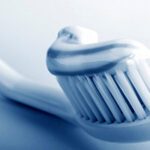The gnawing, the groaning, and oh-the crying! You want to do something for baby when he or she is teething, but what? Well, if you know when to expect baby teeth to come in, then you’ll be that much more calm, cool, and collected for your baby in his or her time of need. Too, while most babies are born without baby teeth, in some rare instances babies are born with a tooth, or two! With that said, it stands to reason that the following baby-teeth timetable covers the majority of babies’ bout with teething. Following is a baby-teeth timetable.
Usually, from six to ten months you can expect your baby to start cutting their lower central incisors. The next baby teeth to come in are from eight to thirteen months, and they’re the upper central and lateral incisors. So, usually your first beautiful picture of your baby with a significant set of teeth are with four front upper teeth and two bottom front teeth, six teeth total.
Next in line to cut baby’s gums, and your dinner short, are the upper first molars, lower first molars and lower lateral incisors. The first molars of, both, the upper and lower jaw are one tooth space skipped toward the back of the jaw from the upper and lower central incisors-those first baby teeth to have cut. So, essentially what you see is four upper front teeth, four lower front teeth, and then a space on both sides of both the upper and lower front teeth, and then the first molars on both sides of both the upper and lower jaw. These first molars usually come in between ten and nineteen months.
From sixteen to twenty-three months you can expect those spaces to fill in with your baby’s canine teeth, both, upper and lower. Then at twenty-three to thirty-three months your baby’s final teeth, twenty in all, the second molars cut his or her gums. These are behind the first molars, and are your baby’s very back teeth.
Some considerations to keep in mind follow. Sometimes, if the first baby teeth to come in, the two lower central incisors, towards ten months, the lower lateral incisors, that is, the two baby teeth on either side of the lower central incisors, may come in right behind them. But, usually before that the two top baby teeth, upper central and lateral incisors will come in before two more bottom teeth cut his or her gums.
So there you have it-when to expect baby teeth to come in. Two bottom baby teeth, then four top baby teeth, then two bottom back teeth and two top back teeth at about the same time, then the spaces fill in that were skipped on the bottom and top with teeth, and finally the very back bottom and top teeth-now giving a total of twenty total baby teeth.
1) lower central incis
2) upper central incisors and lateral incis
3) upper first molars, lower first molars and lateral incis
4) upper and lower canines
5) upper and lower second molars






